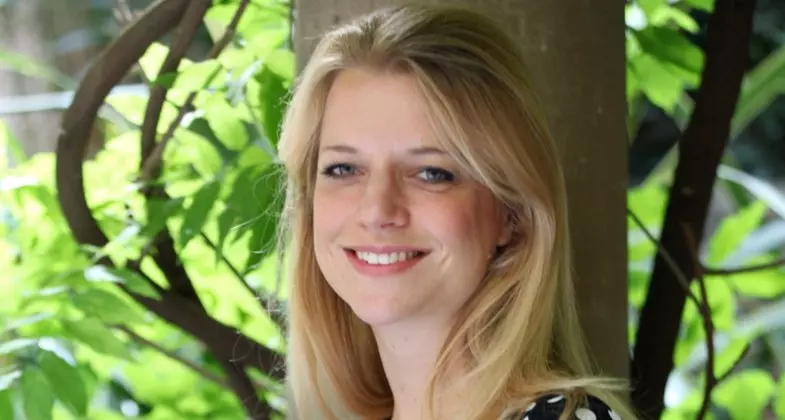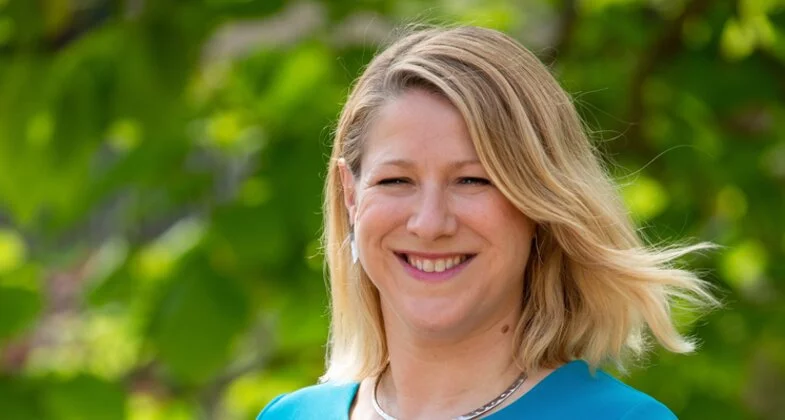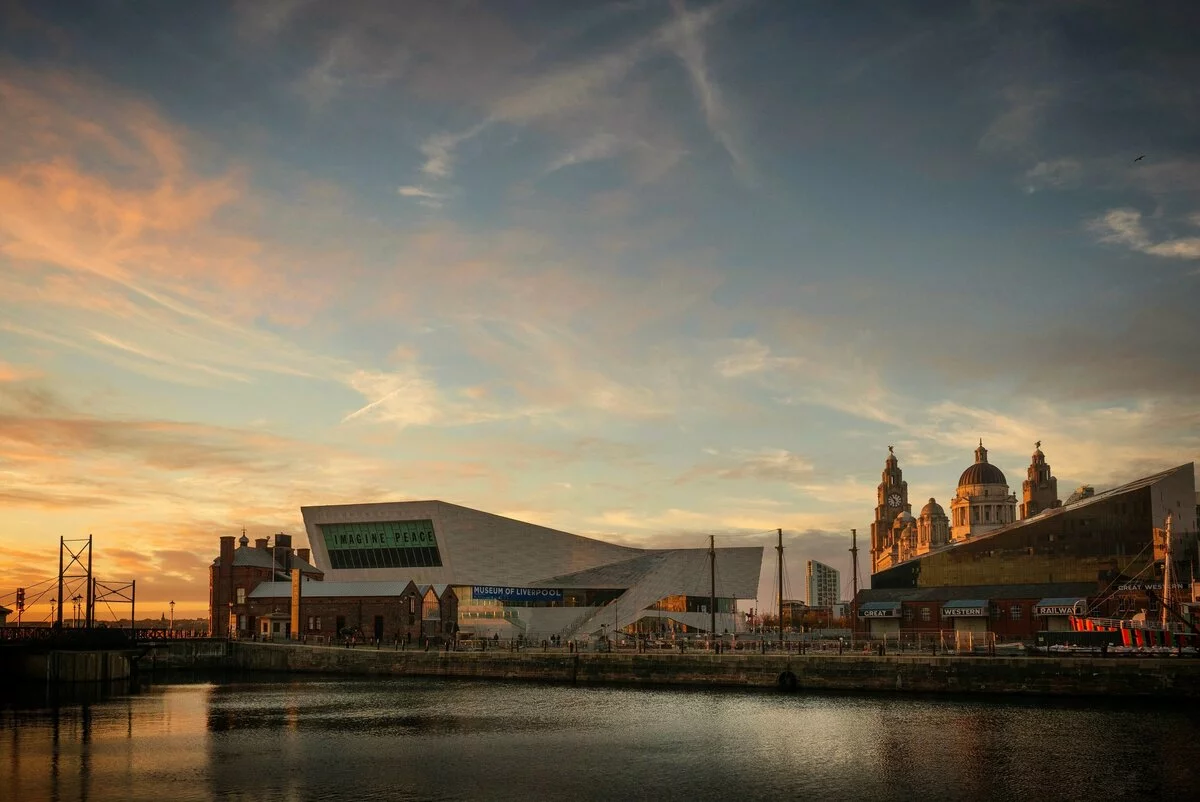Five minutes with…Olivia Curno, Chief Executive of the Vision Foundation
In this edition of ‘Five minutes with’, Sandra Hamovic, Principal Consultant in our Not for Profit practice, interviews Olivia Curno, Chief Executive of the Vision Foundation, formerly known as the Greater London Fund for the Blind.
Born and raised in south London, Olivia is driven by the belief that everyone should be able to enjoy the vibrant cultural, social and economic riches of the city she loves. As Chief Executive at the Vision Foundation, she is responsible for the strategic direction of the organisation, supporting the teams to raise considerable funds and make significant noise, and ensuring that everything they do has the greatest possible impact for London’s partially sighted and blind people.
Olivia was previously Director of Fundraising at the children’s mental health charity Place2Be and Head of Fundraising and Communications at the autism research charity Autistica. She has volunteered widely in the sector, both internationally and at home, and is currently a Trustee of the UK poverty charity Turn2us. Before joining the charity sector, Olivia was a researcher and lecturer in evolutionary biology.
In this interview, I speak to Olivia about the Greater London Fund for the Blind’s rebrand to the Vision Foundation, the launch of which coincided with World Sight Day on 10th October 2019.
How did you come to a decision to rebrand?
The Greater London Fund for the Blind was 98 years old and had never refreshed its name. It also hadn’t had a clear strategic plan in place for some time, so that’s where we started. We wanted to develop an ambitious five-year plan for growth and impact, and we knew we needed a name to fit this. I also think we knew that the right name and brand could help us deliver our ambitions and could be a real asset.
The experience in the team, the advice we received from external supporters and the feedback we were getting confirmed that our existing name was actually holding us back.
How was it holding you back?
Feedback from blind and partially sighted people, others in the sector, our own staff and volunteers, and donors was pretty consistent. They said our name sounded old-fashioned. They said things like “it’s what organisations were called before they had proper names” and “it sounds quite Victorian”.
The ‘Greater London’ was felt to be more information than was necessary. Also ‘for’ the blind instead of ‘with’ was understandably a problem for blind and partially sighted people, and “the Blind” was offensive, focussing on the impairment instead of the human.
The name also didn’t work in terms of its meaning and it wasn’t memorable. It was long and it became an acronym.
How does your new brand reflect your mission and values?
Our vision is a future where people living with sight loss are equal citizens and preventable blindness is a thing of the past. Whilst the name is intentionally short and simple, it’s everything that goes with it – all of our rhetoric, tone of voice and imagery is about celebration and empowerment, and about what people can do, rather than what they can’t.
The brand is extremely appreciative and celebratory. The Vision Foundation as a name played so well to blind and partially sighted people in our focus groups. They described it as optimistic, hopeful and a name that has gravitas and authority.
Of course, there is no perfect name, so not everybody loves it, but it was ticking a lot of boxes. The focus groups were great because many of the attendees had not been asked before. They were critical of many of our ideas, which was incredibly helpful, but they were behind the Vision Foundation.
What are the key ingredients to a successful rebrand?
The user voice is so important, not just because it gives you the best outcome, but because it gives you an inherent courage to keep going, push through and take risks. You don’t want to let people down.
Other things I would highlight are having a fundamental appetite for change and a really clear business rationale.
What were the main challenges you faced during the rebranding process?
Time and money are always a big issue. We wanted to do everything very inexpensively because every penny could be spent on delivering services, so there’s that constant tension. I think we were genuinely listening, and what’s hard about that is that firstly not everyone agrees, and secondly you must be open to changing direction. Our front-runner name internally got thrown out by the blind and partially sighted workshops. That was a hard thing to say goodbye to, but totally the right decision. Working iteratively and being willing to change in response to those changing developments was an important part of the process.
We are a tiny team and a new team, so we were working at pace on a project that was entirely on top of the day job, whilst people were finding their feet. There was real momentum in the process, which kept us on our toes!
How have you ensured that the rebrand is future-proof?
We tried to have a timeless name, so the name itself may well last another 100 years. If we’re still happy with the logo and the font too in 100 years’ time, then we’re probably doing something wrong. We want to be open to innovate. It’s future-proofed in the medium term but hopefully it also has the flexibility to evolve appropriately.
How will you measure the success of the rebrand?
There is a whole range of qualitative data. People are opening their doors quicker, so I feel we’ve suddenly become more credible. Other sector partners have said that we have positioned ourselves well and our new brand is interesting and exciting. Some of that anecdotal feedback is vital, and then of course we have key measures like website hits, social media and donations. Income will be critical!
Looking back, is there anything you would have done differently?
Because of the pace at which we were moving, I don’t think we always kept all stakeholder audiences up-to-date with the latest changes, so I think we could have done better on that. It was tough for the team, and the day job did take a back seat at times, so the question we ask ourselves is: could we have planned and phased the work more elegantly?
What should other charities bear in mind when considering a rebrand?
It is not to be taken lightly. Working out the business rationale is critical. Board and SMT buy-in, particularly early buy-in, is important, as well as stakeholder consultation. Resource planning, so that you’ve got the time, people and money to do it properly, is essential.
We spoke to charities that had rebranded before doing it ourselves to learn from them. And we had two organisations get in touch recently to ask us about our experience, which is great.
We’ve got quite a long, phased roll-out and may be operating under two brands for some time. You must be comfortable with that.
Finally, as CEO, what have you learned about yourself in this role?
I have learned that I am very comfortable with pace and change, and fairly comfortable with risk, but not everybody is. That doesn’t mean that those people are a barrier – lots of people who are less comfortable with change have fantastic input to make – so you need to create opportunities in which people with all those different styles and preferences can feel part of. That can be hard when you have a deadline and multiple priorities, but if you fail, you miss out on talent and you don’t bring people with you. That’s been a hard learning curve for me.
I’ve also learned how easy it is to not remember to inform everybody at every point.
And then, outside of the rebrand, you never know what’s going to be the issue at board level, so you’ve got to be well-prepared for meetings but can’t be obsessed. It’s very different being a CEO in a board meeting to being a Director of Fundraising. Being comfortable with time delays and gaps in your own knowledge is important.
I have had different pro bono mentors in my own career. For example, I had an executive coach some time ago who was phenomenal. I currently have an Action Coach who thinks about business planning cycles and forces me to get quite detailed in my plans, which is not instinctive for me, and that’s incredibly helpful. Without that, a couple of things would have fallen through during the rebrand.
I think everyone should always have a voice and a support outside of the organisation who has their back, but they can be hard to find!
For more information, please contact Sandra Hamovic who is a Principal Consultant in the Not for Profit practice.






